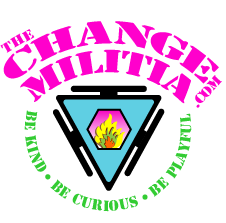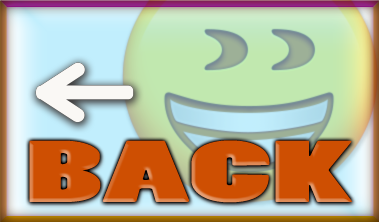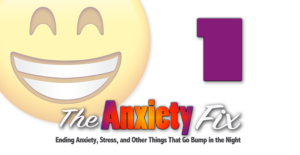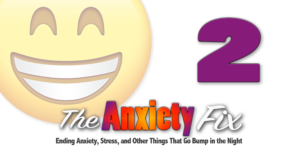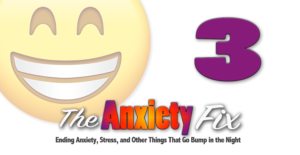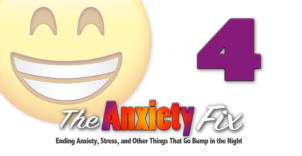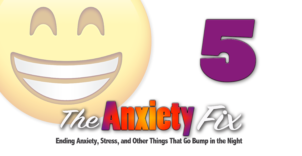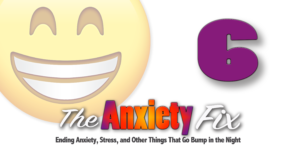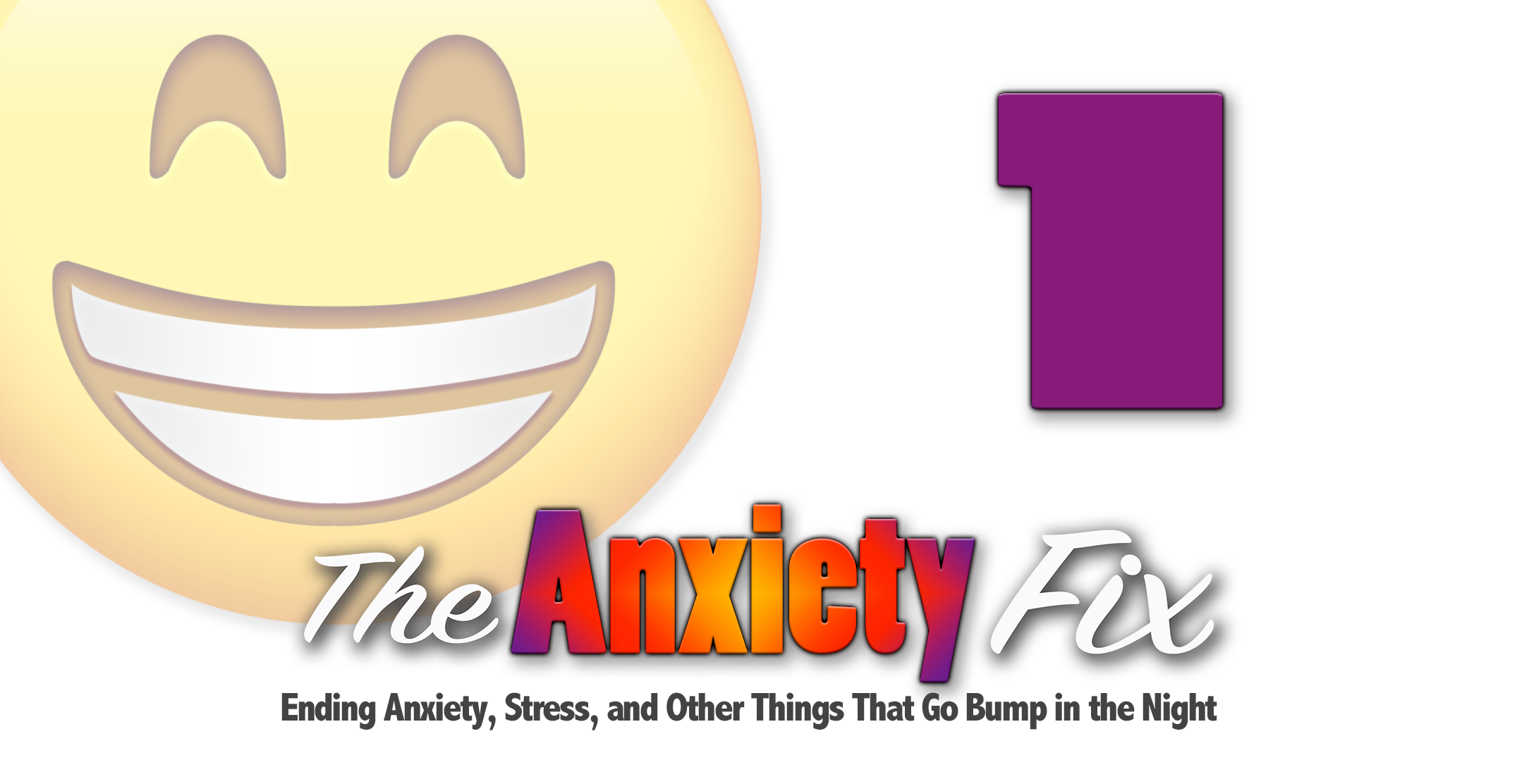
Introduction
Millions of advertising dollars are spent every year trying to convince us that anxiety is a disease that needs to be monitored, medicated, and pampered. We have been told by society, parents, teachers, and friends that anxiety is inevitable and uncontrollable – a part of modern life.
Anxiety, stress, and overwhelm are habits you can change. We developed this course to show you how.
If you are checking this out, you probably have a success mindset (high-performer, motivated, driven, etc.) and are experiencing the anxiety and stress that seems to accompany your desire to achieve and be productive.
You are not alone. 75% of adults reported moderate to high levels of stress in the past month. Everyone has fears and areas where they have discomfort, feel stuck or overwhelmed, and continue to struggle. We have yet to meet a high-performer who didn’t have some degree of anxiety and a significant amount of stress.
Our group program has a 100% success rate for people, like you, who have tried all kinds of things and still haven’t been able to end their anxiety. It has worked for people with low-grade anxiety all the way to people with thoughts of suicide. This introductory program will not only help you stop being anxious, stressed, and overwhelmed; you will feel more alive, connected, and fulfilled.
Anxiety has a cycle that you can disrupt and replace with actions that will increase your productivity, happiness, and fulfillment. In this course, you will discover a new way to approach anxiety – a way to choose action over reaction. You will gain tools to help you change the habits that result in anxiety.
There are six steps with short videos and accompanying text. Each step will give you a practice. Your mind is probably going to tell you to quit because the program is too simple, complex, or time-consuming. The mind panics at the unfamiliar. It tries to distract you when real change is within reach. Be aware of your mind, overrule it, and do the practices. Try not to think too much. Set aside some time every day and just allow yourself to begin.
For best results, we advise repeating each step until you are very proficient before moving on to the next. And remember, anytime you are actively anxious, do one of the movements on the video page.
Reading this and watching the videos won’t give you the changes you are looking for – you must do the practices.
Step One – Current 30
Before you get started, here are three foundational tenets to help you stay on track. Be Curious, Be Kind, Be Playful. Give yourself the time and space to allow changes to occur without beating yourself up or being too serious. Curiosity and playfulness are great ways to lower your resistance to alter and challenge old patterns.
The first practice will help you begin to feel and acknowledge the sensations in your body as you go through your day.
The practice is the Current 30. The intention is to help you begin to feel more sensations in your body in 30-second intervals. Not good and bad, right and wrong, or should and shouldn’t, just unjudged sensations.
Check out the list of sensations at the bottom of the page or print out this list of sensations. And wherever you are and whatever you are doing try to identify sensations on the list in different parts of your body.
As an example, as I type this, I feel the pressure of the keyboard keys on my fingertips, the weight of my forearms on my desk, and my butt, low back, and thighs on my chair. I feel some tension in the base of my skull. My stomach feels half full and I have a small sharp pain in the upper right side of my abdomen. My bladder feels empty and there is a twinge on the outside of my right knee. I can feel my tongue pressing against the roof of my mouth and tightness in my jaw. My eyes are straining slightly, and my shoulders feel achy and heavy. My body is generally warm, but my feet and the back of my head feel cool. I am relaxed and feel a slight smile forming.
Notice that there are no emotion words in there. I didn’t say happy, sad, stressed, jealous, or angry. I listed sensations. Try it! Here is a list of emotions as a reference. Compare and contrast them to the list of sensations. Print them out and let them help you discern the difference.
Current 30 Description
Step 1 – Take 30 seconds and make an inventory of what you are feeling. What do you feel and where in your body are you feeling it? How many different sensations can you feel? How specific can you be?
Step 2 – Do this throughout the day. Be aware of your thoughts and emotions but focus on your sensations.
Step 3 – Every time you do this, try to feel something new, something extra, and something unexpected. Refer to the sensation list often by printing it out.
Step 4 – It might be helpful to write down your Current 30 observations and then check them against the sensations and emotions list. If you find emotions on your list, see if you can find sensation words to replace them.
* This is a foundational step to the rest of the program. Don’t skip it!
* Your intention should be to experience your inner world more fully – to feel more deeply. Feel for the subtle and the unanticipated. Notice something new and remember not to judge – just detect.
* Strive to add depth, breadth, and specificity to your experiencing of physical sensations.
* Don’t create labels or a story about what you are experiencing, just feel. Bring as much and as many sensations as possible into your awareness.
* Don’t judge, compare, or condemn. Try not to place any positive or negative value on the experience or on individual sensations.
Why it Matters – This is the single most powerful tool you will ever have to find your center and verify what is actually present. Anxiety has a set of sensations, as do all of your other emotional states. As you get to know your habitual sensations, you will be able to identify the precursor sensations to anxiety. As you are able to change what you are feeling, you will have another tool to forestall, decrease, and eliminate your anxiety.
Everyday Usability – This exercise will show you that you are never angry, afraid, sad, or any other emotional label including anxious. You have a set of sensations. How you value those sensations and the labels you give them is a choice. When you can identify your sets of sensations, you can alter the combinations to influence the outcome and change the label.
Progression – Once you get better at feeling sensations in all parts of your body, find the recipe for each of your emotions. If you are feeling emotional, you are feeling something. Emotions have accompanying sensations. Find the set of sensations that accompany each of your emotional labels.
Practice the Current 30 several times a day. You can do it as you wake-up, while eating breakfast, driving to work, waiting for your morning latte, when the cable company puts you on hold, while the office gossips about Joe in accounting, etc. Set a few alarms on your phone to help you develop the habit. Be curious. Feel for things you don’t expect to find.
Allow yourself the opportunity to succeed by prioritizing the Current 30 practice. It seems simple, but it is effective and the foundation for what is to come. Don’t let your mind try to convince you already know what you are feeling.
Step One – Wrap Up
Anxiety, stress, and overwhelm are habits you can change. You can break down every emotion into a set of sensations. You can chose the labels you give to your sets of sensations. You can learn to feel emotions as sensations.
Do the Current 30 and reap the rewards. Actions bring about change. You must do the practices to get results. Make time to practice – be determined and curious. Every journey begins with the first step. Take it!
Don’t move on to the next step until you have done a lot of Current 30’s and discovered sensations you didn’t know existed. Feel how your sensations change as your thoughts, emotions, and environments change.
Step Two will show you that there are lots of versions of you and how to choose who you want to be. We are going to talk about your states of being. You will explore the different versions of you that are activated as things change and how that leads to anxiety … or away from anxiety.
If you get stuck or have any questions, please feel free to email us.
List of Sensations (Sensation PDF)
Achy, Empty, Moist, Spinning, Airy, Energized, Nauseous, Still, Bloated, Expanded, Nervous, Streaming, Blocked, Expansive, Nervy, Stringy, Breathless, Faint, Numb, Strong, Brittle, Flaccid, Open, Suffocated, Bruised, Floating, Paralyzed, Suffocating, Bubbly, Flowing, Pounding, Sweaty, Burning, Fluid, Pressure, Buzzy, Flushed, Prickly, Tender, Calm, Fluttery, Puffy, Tense, Clammy, Fragile, Pulsing, Thick, Clenched, Frantic, Queasy, Thin, Closed, Frozen, Quivery, Throbbing, Cold, Full, Radiating, Tight, Congested, Fuzzy, Ragged, Tingling, Constricted, Heated, Raw, Tingly, Contracted, Heavy, Referring, Trembly, Cool, Hollow, Relaxed, Tremulous, Damp, Hot, Releasing, Twitchy, Dark, Icy, Restricted, Warm, Deflated, Inflated, Sensitive, Wobbly, Dense, Itchy, Shaky, Wooden, Disconnected, Jagged, Sharp, Dizzy, Jittery, Shivery, Draining, Jumpy, Smooth, Dry, Knotted, Sore, Dull, Light, Spacey, Electric, Luminous, Spacious, Swirling, Vibrating.
List of Emotions (Emotions PDF)
Joyful, Tenderness, Helpless, Defeated, Enraged, Cheerful, Sympathetic, Powerless, Bored, Outraged, Content, Adoration, Dreading, Rejected, Hostile, Proud, Fondness, Distrusting, Disillusioned, Bitter, Satisfied, Receptive, Suspicious, Inferior, Hateful, Excited, Interested, Cautious, Confused, Scornful, Amused, Delighted, Disturbed, Grief-stricken, Spiteful, Elated, Shocked, Overwhelmed, Helpless, Vengeful, Enthusiastic, Exhilarated, Uncomfortable, Isolated, Disliked, Optimistic, Dismayed, Guilty, Numb, Resentful, Elated, Amazed, Hurt, Regretful, Trusting, Delighted, Confused, Lonely, Ambivalent, Alienated, Calm, Stunned, Melancholy, Exhausted, Bitter, Relaxed, Interested, Depressed, Insecure, Insulted, Relieved, Intrigued, Hopeless, Disgusted, Indifferent, Hopeful, Absorbed, Sad, Pity, Pleased, Curious, Guilty, Revulsion, Confident, Anticipating, Hurt, Contempt, Brave, Eager, Lonely, Weary, Comfortable, Hesitant, Regretful, Bored, Safe, Fearful, Depressed, Preoccupied, Happy, Anxious, Hopeless, Angry, Love, Worried, Sorrow, Jealous, Lust, Scared, Uncertain, Envious, Aroused, Insecure, Anguished, Annoyed, Tender, Rejected, Disappointed, Humiliated, Compassionate, Horrified, Self-conscious, Irritated, Caring, Alarmed, Shamed, Aggravated, Infatuated, Shocked, Embarrassed, Restless, Concern, Panicked, Humiliated, Grumpy, Trust, Afraid, Disgraced, Awkward, Liking, Nervous, Uncomfortable, Exasperated, Attraction, Disoriented, Neglected, Frustrated.
